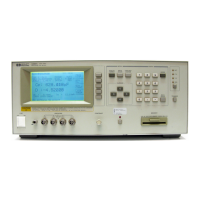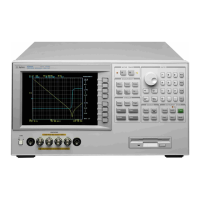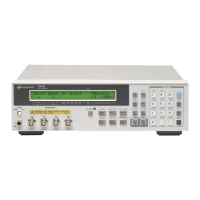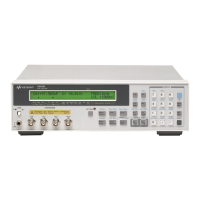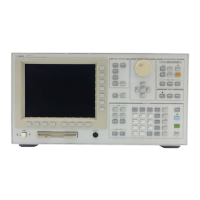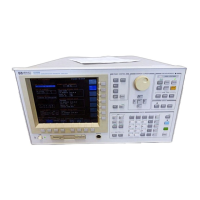250 Appendix C
Status Reporting System
General Status Register Model
Condition register and transition filter
When the status register has a transition filter, there is a lower register called a condition
register under the event register. The transition filter is between the event register and the
condition register.
The transition filter enables you to select a positive and/or negative transition of the
condition register bit in order to set a bit in the corresponding event register. For example,
using the negative transition filter to set bit 3 to “1” causes bit 3 of the event register to be
set to “1” when bit 3 of the condition register makes a negative transition, that is, changes
from 1 to 0.
Figure C-2 Transition filter and condition register
The 4288A's condition register and transition filter work only with the operation status
register. However, the 4288A's transition filter’s setting is fixed so that bits 5, 8, 9, 10 of
the event register are set to “1” when the condition register makes a positive transition (i.e.,
changes from 0 to 1) and bits 1, 2, 3, 4, 7, 12 of the event register are set to “1” when the
condition register makes a negative transition (i.e., changes from 1 to 0).
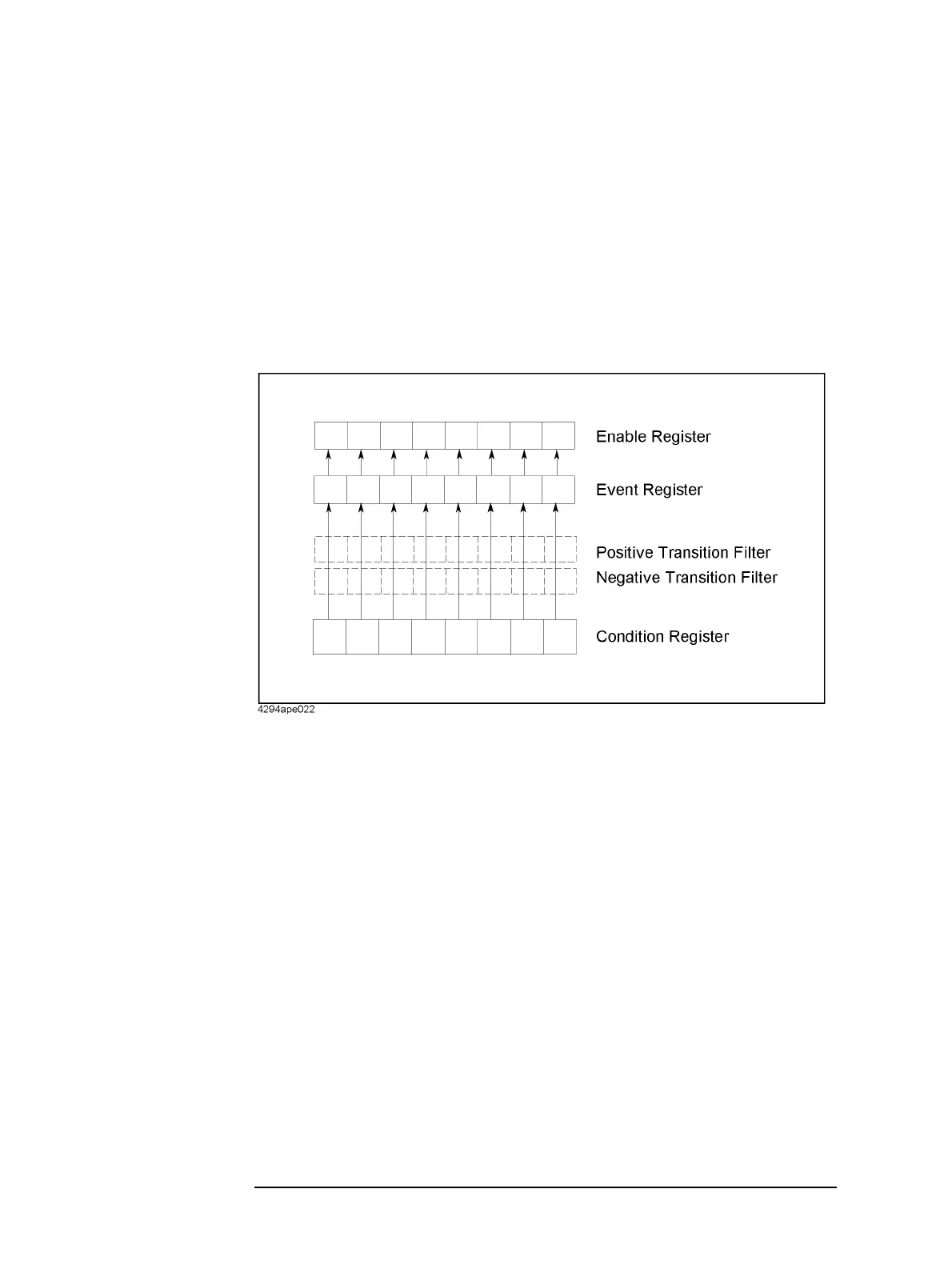